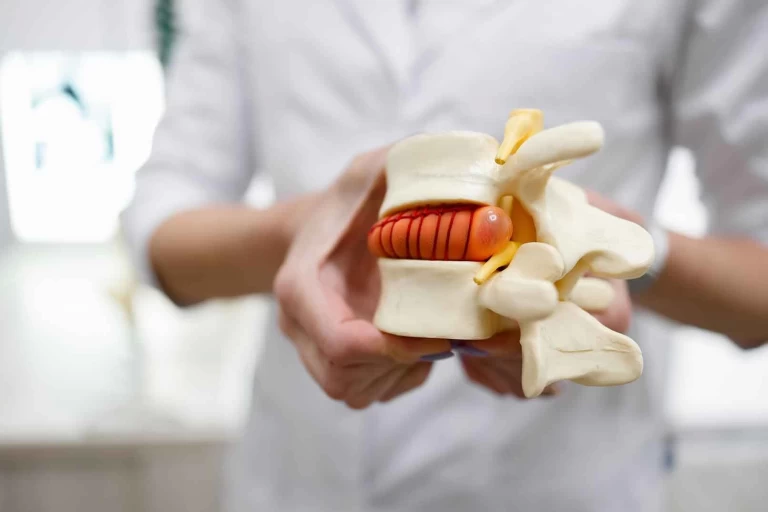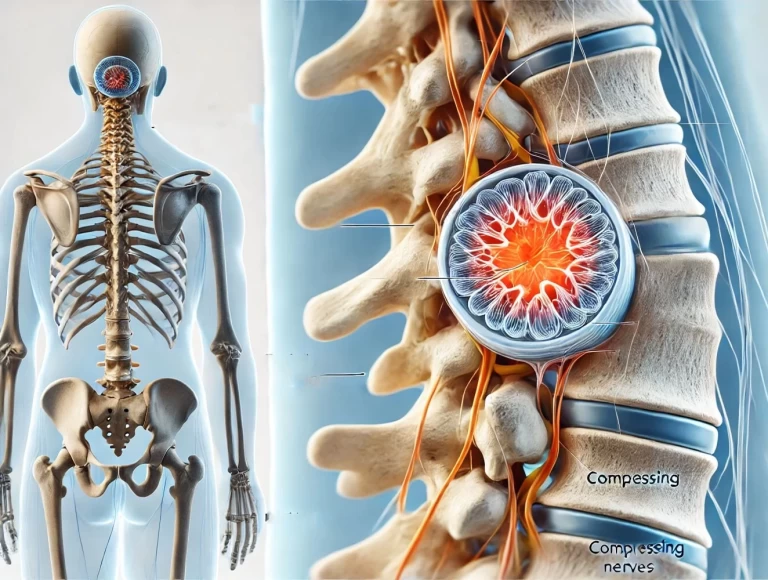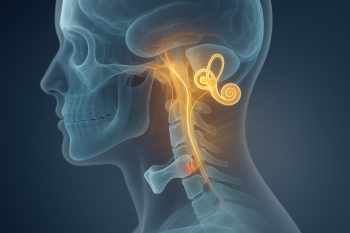
Are you experiencing back pain? Are you worried that it might stem from herniated disk? There is no need for intense panic - research shows that the majority of patients suffering from a herniated disc can find meaningful relief with professional chiropractic care. The Journal of Manipulative and Physiological Therapeutics recommends checking out this type of care before going under the knife. In this blog post, we'll dive deep into the details of treating a hurting back caused by a herniated disc via manipulatory and physical therapy procedures provided by experienced chiropractors. We will also discuss how to take extra precautions on your own to minimize or avoid reoccurrence. Keep reading to prepare yourself with all the information you need!
Understand Herniated Disks and Chiropractic Care
By downloading the Digital Patient Chart mobile app you can better control your patient portal.
A herniated disk commonly referred to as a slipped, ruptured, or bulging disk is a condition where the soft, jelly-like interior of the intervertebral disk protrudes through the tougher exterior. This can cause pain, discomfort, and even nerve damage. However, chiropractic care offers a non-invasive treatment option that helps in alleviating pain and promoting a speedy recovery. Chiropractors are trained experts in spinal manipulation, which involves adjusting the spine to improve its alignment and reduce pressure on the nerves. By providing gentle and targeted treatments to the affected area, chiropractic care can effectively ease the symptoms associated with herniated disks, as well as prevent further complications. With chiropractic care, patients can find relief from the debilitating effects of a herniated disk and work towards restoring their spinal health and mobility.
Causes of a Herniated Disk
A herniated disk is a prevalent and sometimes debilitating medical condition that affects the spine. Various factors contribute to the development of a herniated disk, with the main culprit being the natural degeneration of the spinal disks as we age. This weakening of the disk structure predisposes it to rupture under stress or pressure. Apart from aging, participating in physically demanding activities that exert excessive strain on the spine, such as heavy lifting, bending, or prolonged sitting, can also increase the risk of sustaining a herniated disk. Additionally, individuals who are genetically predisposed to weak spinal structures might be more likely to encounter this issue. In some cases, traumatic events such as a sudden fall or car accident might result in a herniated disk. It is of paramount importance to be aware of these risk factors as well as take appropriate preventive measures, such as practicing good posture and engaging in regular exercise, to strengthen the spinal muscles and minimize the chances of developing a herniated disk.
Symptoms of a Herniated Disk
A herniated disk is an unfortunate and painful condition that can creep up on a person unexpectedly. The symptoms, however, can provide tell-tale signs that alert you to seek prompt medical attention. Often, the first indication is a sudden sharp, shooting pain that radiates down the leg, known as sciatica. This pain may intensify when you cough, sneeze, or make certain movements, such as lifting heavy items or twisting your body. Additionally, you may experience numbness or tingling sensations in the affected limb, highlighting the nerve's involvement. In more extreme cases, a herniated disk may lead to muscle weakness, resulting in difficulty walking or simply picking up objects. Being aware of these warning signs and seeking a medical professional's expertise can be vital in finding relief and a path to recovery.
Benefits of Chiropractic Care for Herniated Disks
Dealing with the pain and discomfort of herniated disks can be a major hindrance to daily life, but fortunately, chiropractic care offers substantial relief and improvement for those who suffer from this condition. As a non-invasive and drug-free treatment option, chiropractic adjustments work to realign the spine, thus alleviating pressure on the affected disk and allowing the body to heal naturally. By restoring normal function to the spine and improving your posture, chiropractic care not only reduces pain and inflammation but can also enhance your overall quality of life. Many patients find that regular chiropractic visits contribute to an increased range of motion, a decrease in muscle spasms, and improved nerve function. Don't let herniated disks dictate your life any longer – consider the immense benefits of chiropractic care for a healthier and more comfortable future.
What Can You Expect During a Chiropractic Treatment for a Herniated Disk
A visit to the chiropractor for a herniated disc can be a life-changing experience, as it may offer pain relief and restore mobility. During your appointment, expect the chiropractor to conduct a thorough evaluation, which includes discussing your medical history, symptoms, and any previous treatments. Following this, a physical examination enables the chiropractor to assess your posture, spine, and range of motion. They may also use imaging techniques, such as X-rays or MRI, to confirm the diagnosis. Once the location and severity of the herniated disc are determined, the chiropractor provides a personalized treatment plan using various methods. Such methods may consist of gentle spinal manipulations and mobilization techniques, which help to realign the spine and relieve pressure on the affected disc. They may also incorporate decompression therapy, which involves a special traction device to stretch and decompress the spine, to reduce herniation and alleviate pain. The chiropractor may advise you on exercises, stretches, and lifestyle changes to minimize the risk of future injuries, ensuring a comprehensive and holistic approach to your herniated disc treatment.
Exercise and Stretches for Preventing and Treating a Herniated Disk
Anyone who has experienced a herniated disk understands the unbearable pain and discomfort it can bring. Fortunately, there exists a combination of exercise and stretches that can effectively prevent and treat this condition. By integrating core-strengthening and flexibility-enhancing routines into a regular exercise program, you can effectively target the muscles surrounding the spine and alleviate the pressure on the disks, reducing the risk of disk herniation. Additionally, these targeted exercises and stretches can play a vital role in the treatment process by mitigating the symptoms and promoting recovery. By maintaining consistent practice and ensuring proper posture throughout daily activities, one can successfully prevent and manage a herniated disk, allowing for a pain-free and active lifestyle.
Our upper cervical chiropractic office is the perfect place to come when you want to regain balance in your spine. With our expertise and dedication to helping patients, we can quickly provide relief and lasting solutions! Call us today to see how we can help.








Leave a comment